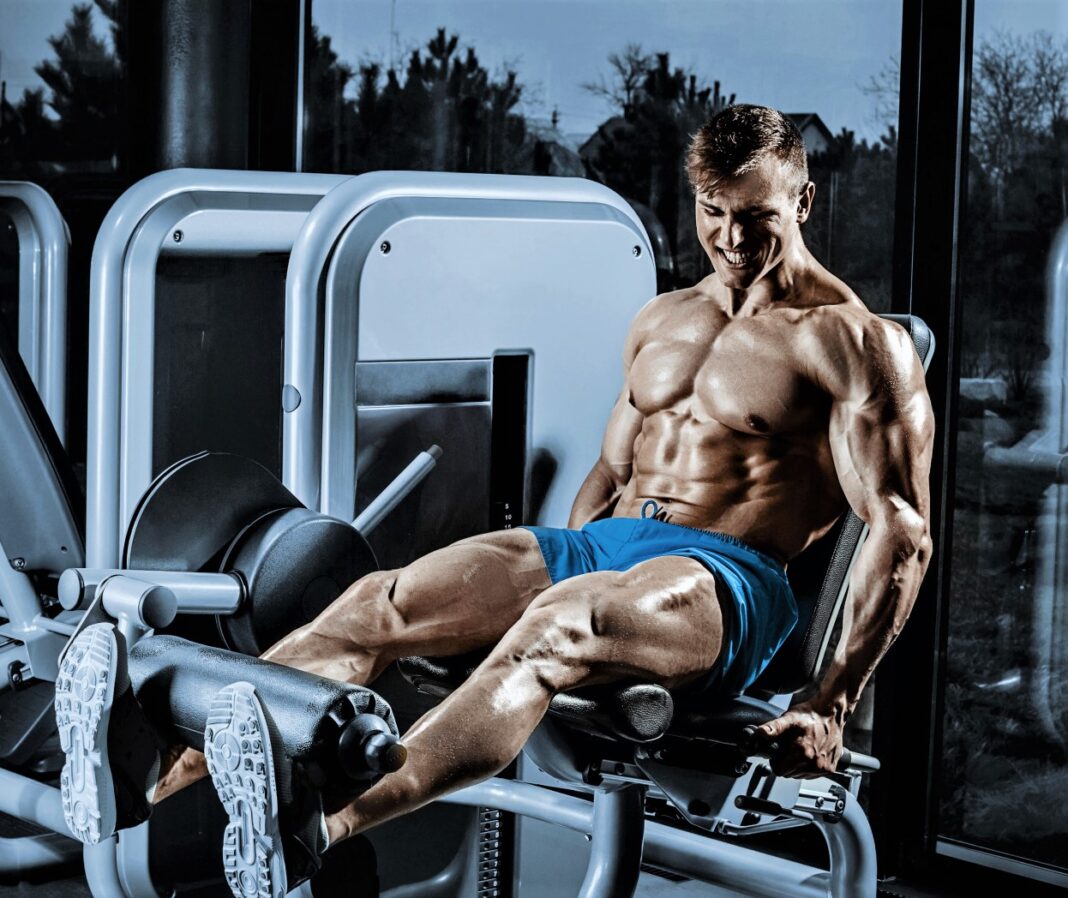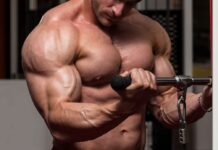Isolation exercises. Sometimes help does more harm than good. Sometimes you just want to go it alone from start to finish. So it is with all-isolation workouts. Whether it’s a simple muscle like biceps or a complex body part like upper back, if you eliminate its helpers, you can hit only the target on rep after rep. This allows you to work around injuries. For example, if your shoulder is aching, you can do only flying movements for chest and laterals and raises for delts, avoiding the pain of presses. Eschewing compound lifts will limit the amount of metal you move, but it will also allow you to dodge joint strains and prevent secondary muscles—those overeager helpers—from doing too much.
From quads to forearms, what follows is an isolation exercise guide that allows you to make every bodypart routine an individual effort.
ISOLATION EXERCISE BASICS
✷ Isolation exercises work one body part and involve only one unique joint or paired joints. For example, pec-deck flyes (isolation) work only the pecs and involve only the shoulder joints, while bench presses (compound) work the pecs with the front deltoids and triceps and involve the shoulder and elbow joints.
✷ Isolation exercises limit the amount of weight you can use in comparison to compound lifts, but they better focus each rep, from stretch to contraction, on the targeted area.
✷ Isolation exercises allow you to work around joint and muscle injuries.
QUADRICEPS
To go all-isolation, forget every kind of squat or leg press, all of which employ the glutes and hamstrings. The only true quad isolation exercises are leg extensions and leg adduction. (We’re applying “quad” to all muscles at the front of the thigh.) To go all-isolation, spend a lot of time on a leg extension machine doing bilateral and unilateral variations, and finish with high reps and drop sets to crank up the heat. Add adduction to work the adductors of the groin area.
HAMSTRINGS
In contrast to quads, it’s easy to exhaust hamstring workout after workout with only isolation exercises. Do lying, seated, and/or standing leg curls. A ham routine consisting of two of these exercises is perfect, but studies show seated leg curls are more effective than lying or standing leg curls.
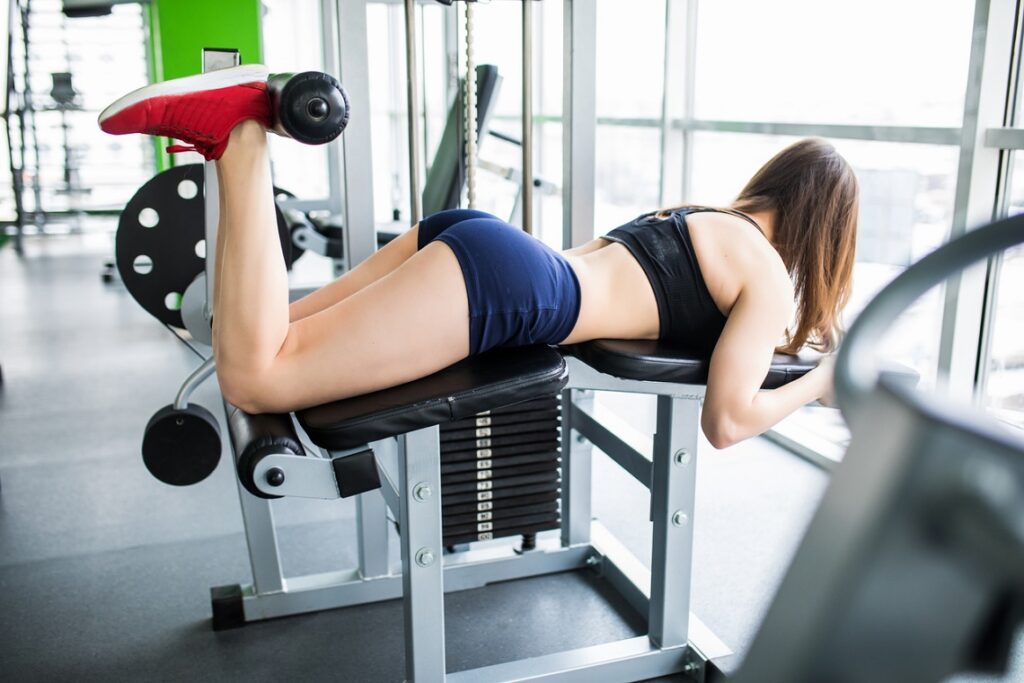
GLUTES
It’s difficult to isolate the glutes. They work with the legs during squats and lunges. To isolate them, do kickbacks and keep your knee locked. This is easiest to do without weight or with ankle weights. Leg abduction, a borderline isolator, is a one-joint exercise (hip joints only) but it will work the glutes in conjunction with the tensor fasciae latae of the upper, outer quads.
CALVES
You’re probably already doing all-isolation calf workouts. Almost all calf exercises, whether common or uncommon isolate the lower legs, from the standard (seated and standing calf raises) to the more obscure (tibia raises and one-leg calf presses). You have to work hard to come up with a compound calf exercise like walking calf raises.
UPPER BACK
Most lat exercises—pullups, pulldowns, and rows—involve two pairs of joints (elbow and shoulder), and work the muscles of the upper back with help from biceps and rear deltoids. Compound. You may have never considered performing a lat exercise without your biceps, but there are some. The two most common are the straight-arm pulldown and the pullover, especially the machine pullover—a favorite back-expander of Dorian Yates. Because both stress the outer lats with the serratus and the long triceps heads, they’re not isolators, but they do eliminate the elbow joints, biceps, and rear delts, if you need to work around an injury to any of those.
A true lat isolation exercise is the reverse cable side lateral with your arm traveling from out and slightly elevated (picture the top of a one-arm, cable side lateral) to down at your side. Another upper back isolator is the back shrug. From the starting position of any bilateral row, keep your arms straight as you pull your scapula back. This very short movement stresses the inner trapezius (upper mid-back). A T-bar machine is great tool for back shrugs.
LOWER BACK
Do only back extensions (a.k.a. hyperextensions or hypers) and position yourself so the pad is high on your quads. Keep your legs straight. Bend down and raise up powered by your spinal erectors, excluding your hips and hamstrings.
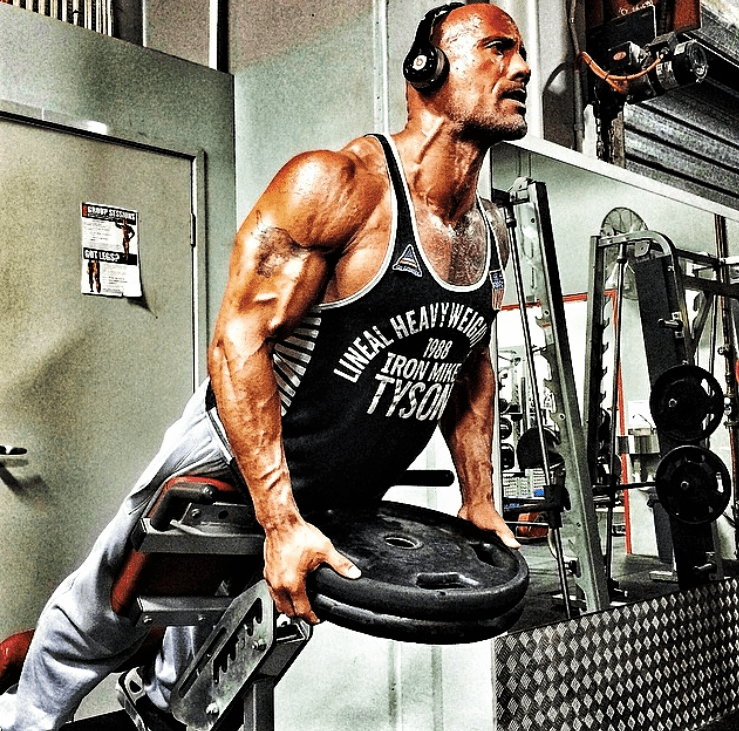
CHEST
Pectorals are unique because it’s equally easy to construct all-compound or all-isolation chest workouts. The former consists of only of presses, dips, and pushups—all of which incorporate the front deltoids and triceps to assist the pecs. The latter is made up of only flying motions to isolate the pecs. You can flye with dumbbells, machines, and cables (crossovers) and from a variety of angles to stress the upper, middle, lower, inner, and outer pecs. All-isolation chest workouts are especially useful when you’re suffering shoulder or elbow pain—common pressing maladies.
DELTOIDS
Whether done with dumbbells, a barbell (for front raises), cables, or a machine, front raises, side laterals, and rear laterals isolate the anterior, medial, and posterior deltoid heads, respectively. As with a press-free pec workout, a shoulder workout devoid of overhead pressing or upright rowing is ideal for evading joint pain.
TRAPEZIUS
To go all-isolation, stick to various kinds of shrugs (barbell, dumbbell, machine, etc.), all of which isolate the trapezius. Keep your elbows straight throughout each rep.
ABDOMINALS
Unless you’re a fan of planks and rollouts, you’re probably already doing all-isolation ab workouts. Various kinds of crunches, leg/knee raises, curl-ups, and side raises are all isolators. The most common ab exercises in bodybuilding routines target specific midsection areas: upper rectus abs, lower rectus abs, or obliques.
TRICEPS
To go all-isolation, avoid presses and dips for triceps. Instead, do pushdowns, kickbacks, and various types of triceps extensions, including lying EZ-bar (skullcrusher), seated one-dumbbell, and rope.
BICEPS
This one-joint muscle is as easy to fatigue with all isolators as it is difficult to exhaust with compound lifts. Any underhand or supinating curl you perform with strict form will hit only your biceps. Do curls seated and/or with your arm(s) locked in place (example: concentration curls) to prevent cheating.
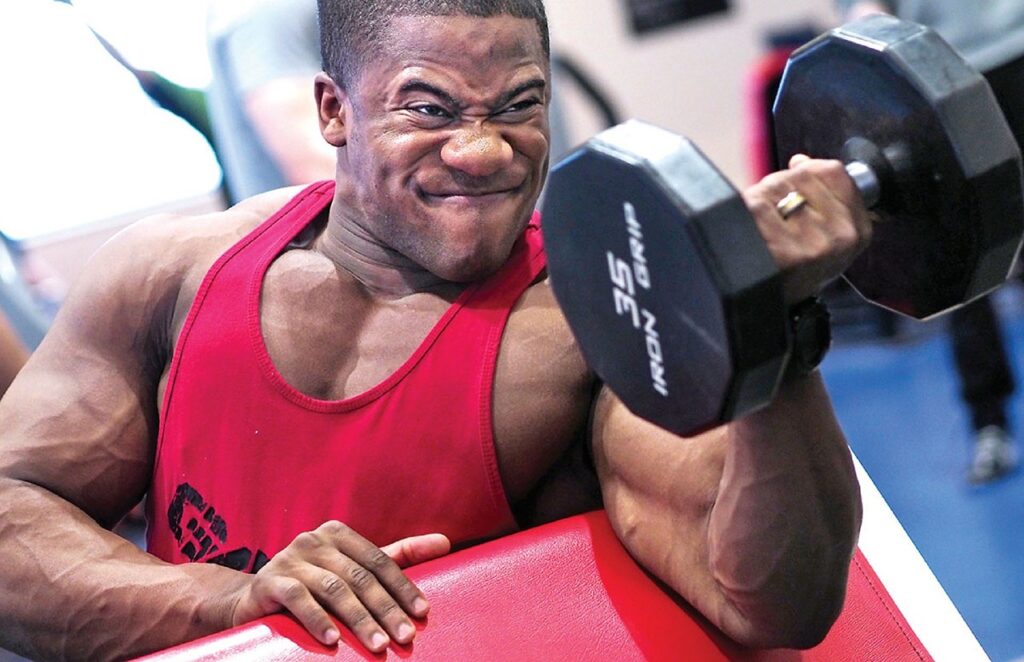
FOREARMS
Wrist curls isolate the forearm flexors, while reverse wrist curls stress only the forearm extensors.
ISOLATION EXERCISE TRAINING TIPS
✷ Single-joint muscles, like calves, can be easily trained with only isolation exercises.
✷ More complex bodyparts, like upper back, are more difficult to fully stress with only isolation exercises.
✷ By wearing straps, you can reduce hand and forearm stimulation during many exercises, including shrugs, laterals, curls, and most back lifts. Similarly, sitting instead of standing removes subtle leg action from exercises.
ISOLATION EXERCISES CHEST ROUTINE
Incline Dumbbell Flye — 4 sets x 10-12 reps
Decline Dumbbell Flye — 4 sets x 10-12 reps
Pec-Deck Flye — 3 sets x 10-12 reps
Cable Crossover — 3 sets x 10-15 reps



































